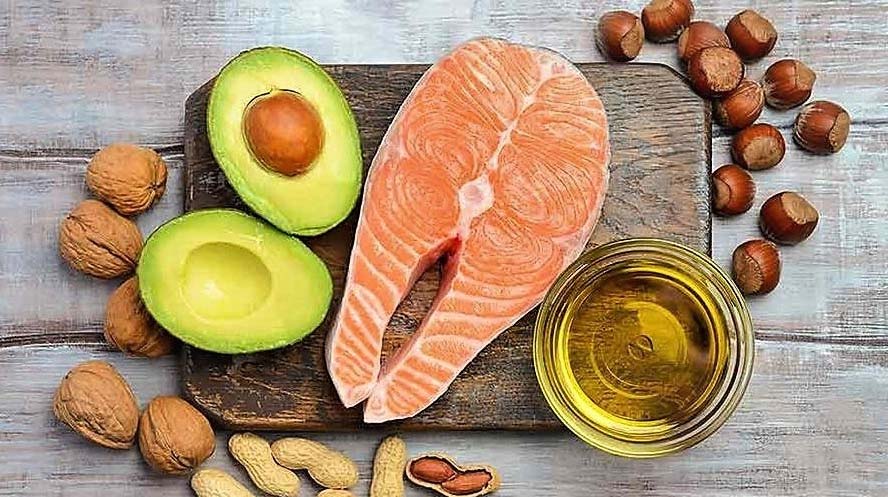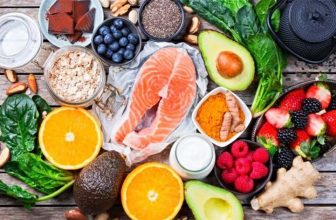
In the last couple of decades, people have become far more concerned about their health and trying to maintain a healthy weight. This focus on fitness and physical wellbeing has given birth to tons of diet plans, with varying degrees of success. Since there are so many options out there, the purpose of this article is to make your choice easier and help you find the diet plan that is best suited to your needs. So let’s dive in and read on for these 5 Efficient Diets for Easy Weight Loss and Control.
1. Golo Diet
If you want to lose weight in a timely fashion, you should consider following the Golo diet plan. This plan consists of three distinct phases, at the end of which you will not only see an improvement in your overall health, but your belly fat will be significantly trimmed down encouraging the growth of toned muscles. This 30-day diet program was invented by Keith Ablow, a New York Times best-selling author, together with a team of nutritional experts, with the purpose of obtaining the best possible results. According to DefendYourHealthcare.com, the reason why this diet plan is so efficient is that it helps break insulin resistance, kick-starting all the body mechanisms that boost weight loss and conduce to fast fat burning.
Following the diet plan is quite straightforward. While it does provide some degree of liberty when it comes to snacks, you should entirely avoid any kind of processed food and ‘junk’ food. As for what you are allowed to eat, the Golo diet plan is based on lean proteins, low glycemic-index fruits, vegetables, whole grains and lean proteins. These foods, besides having high nutritional value, will also help stave off hunger and prevent you from overeating. Another factor to take into account is that this particular diet plan consists of taking supplements. However, these supplements are 100% natural, made from a combination of plant-derived ingredients and beneficial minerals. It’s worth noting that focusing solely on these supplements will not speed up your weight loss, so it’s best to combine them with a balanced diet.
2. Ketogenic Diet
Also known as the “keto diet”, this diet plan involves consuming foods that have low amounts of carbohydrates. Foods high in carbs will push your body to produce insulin and glucose. Glucose is a molecule that your system converts into energy, while insulin filtrates glucose and transports it throughout your bloodstream.
The purpose of the keto diet is to trick your body into entering a state known as “ketosis”. This process, which is triggered to help your body survive hunger, facilitates the production of ketones and forces your system to use body fats as an energy source instead of glucose. In other words, you can use the keto diet to artificially induce your body into a starvation state without actually starving yourself. This obviously will not only speed up your weight loss efforts but also provide you with greater energy levels in the longer term.
The diet plan itself is actually a tad more complicated than just not eating carbs. Before starting this diet, make sure to plan ahead and stock your fridge accordingly. Furthermore, you will have to develop a habit of measuring food portions, and you will be dealing with some very precise numbers. You have to keep your carb intake low (less than 15 grams per day) and limit the foods with high carb levels, like pasta, cereals and bread.
For keto to yield the best results, avoid the following foods:
• Fruits – oranges, bananas, apples
• Grains – corn, cereal, rice, wheat
• Sugar – agave, maple syrup, honey
• Tubers – yams, potatoes
Here is what you are allowed to eat:
• Leafy greens – spinach, kale, broccoli, cauliflower
• Meats – lamb, beef, fish, eggs, poultry
• Nuts and seeds – walnuts, sunflower seeds
• Sweetener – erythritol, stevia, monk fruit
• High-fat dairy – fat cream, butter, hard cheeses
• All types of berries – like blackberries and raspberries
• Avocado
3. Zone Diet
Unlike the keto diet, the Zone Diet is a tad more unrestrictive when it comes to carb intake, but you will still have to limit it to a certain proportion. The programme involves consuming protein and carbohydrates in a predefined ratio, in five meals per day. The purpose of this structure is to give your body a sensation of satiety that prevents overheating and instills a tight dietary discipline that could accompany the rest of your lifetime.
One clear advantage of this diet plan that many people will appreciate is that it includes the majority of foods. The catch? Ideally, each meal should consist of 40% carbohydrates, 30% protein and 30% fat, so you’ll have to carefully measure the percentages of each meal. For this, you’ll have to convert all foods into “blocks” by measuring them on a digital scale. Fortunately, you do not have to follow the percentage precisely in order to get the best results. The important thing is to eat quality food and respect the ratios within reasonable margin errors.
4. Atkins Diet
Similar to the keto diet, the Atkins diet is built around a low intake of carbohydrates. It is much more accessible and easy to follow because you can eat as much protein and fat as you want as long as you abstain from foods that contain high amounts of carbs. Although it does involve consuming generous quantities of fats, studies show that it does not raise your levels of bad cholesterol.
The reason why this diet is so effective is due in part to the foods that should be avoided (the same as in the keto diet). The Atkins diet is split into four distinct phases:
• Phase 1 – Also called the induction phase, the follower has to consume under 20 grams of carbs daily, for two weeks. This will trigger the weight loss process.
• Phase 2 – The balancing phase consists of adding nuts and vegetables low in carbs and fruit.
• Phase 3 – This phase starts when the dieter is very close to their weight goal; add more carbs until the weight loss slows down.
• Phase 4 – The final phase consists of maintenance. You can eat as much carbs as you like (in moderation, of course) without gaining back the weight you lost.
5. Dukan Diet
The Dukan diet was developed in 2000 by French general practitioner and nutritionist Pierre Dukan. This particular diet plan revolves around lean protein, water, oat bran and a 20-minute long walk.
Generally speaking, this diet does not set a limit on the amount of food that you can eat as long as they are on the recommended list. The diet is structured in four phases:
• Attack – Lasting ten days, you can eat unlimited amounts of lean protein along with 1.5 tablespoons of oat bran and six cups of water daily.
• Cruise – For two to three months, add non-starchy vegetables and two tablespoons of oat bran.
• Consolidation – Allows the follower to eat vegetables daily, one piece of fruit, two slices of whole-grain bread, plus two cheat meals.
• Stabilization – Also called the maintenance phase, you eat whatever you like as long as you follow the “attack phase” once per week.
There are many viable diet plans out there, you might wonder which one will provide you with the best possible results. But whatever your choice, the most important thing is to keep an open mind, persevere, be patient and find a simple way to measure your results, which will certainly be gratifying when they are realised! What diet have you adopted that’s worked for you? Let us know below, join in the conversation on Facebook follow us on Twitter and Instagram. (Check out these other diet-based articles too, designed to help you GET and KEEP YOUR Fit ON!)









